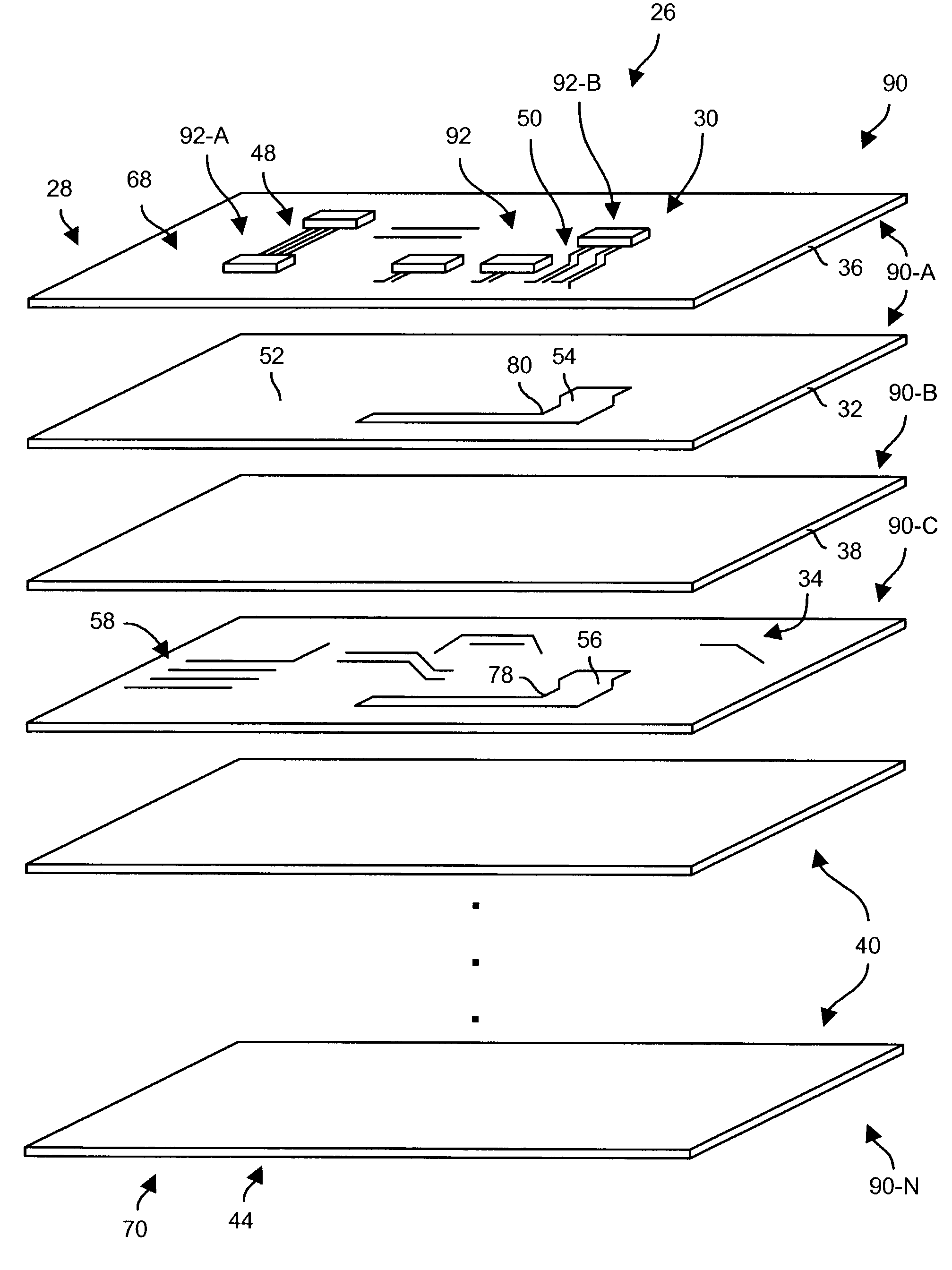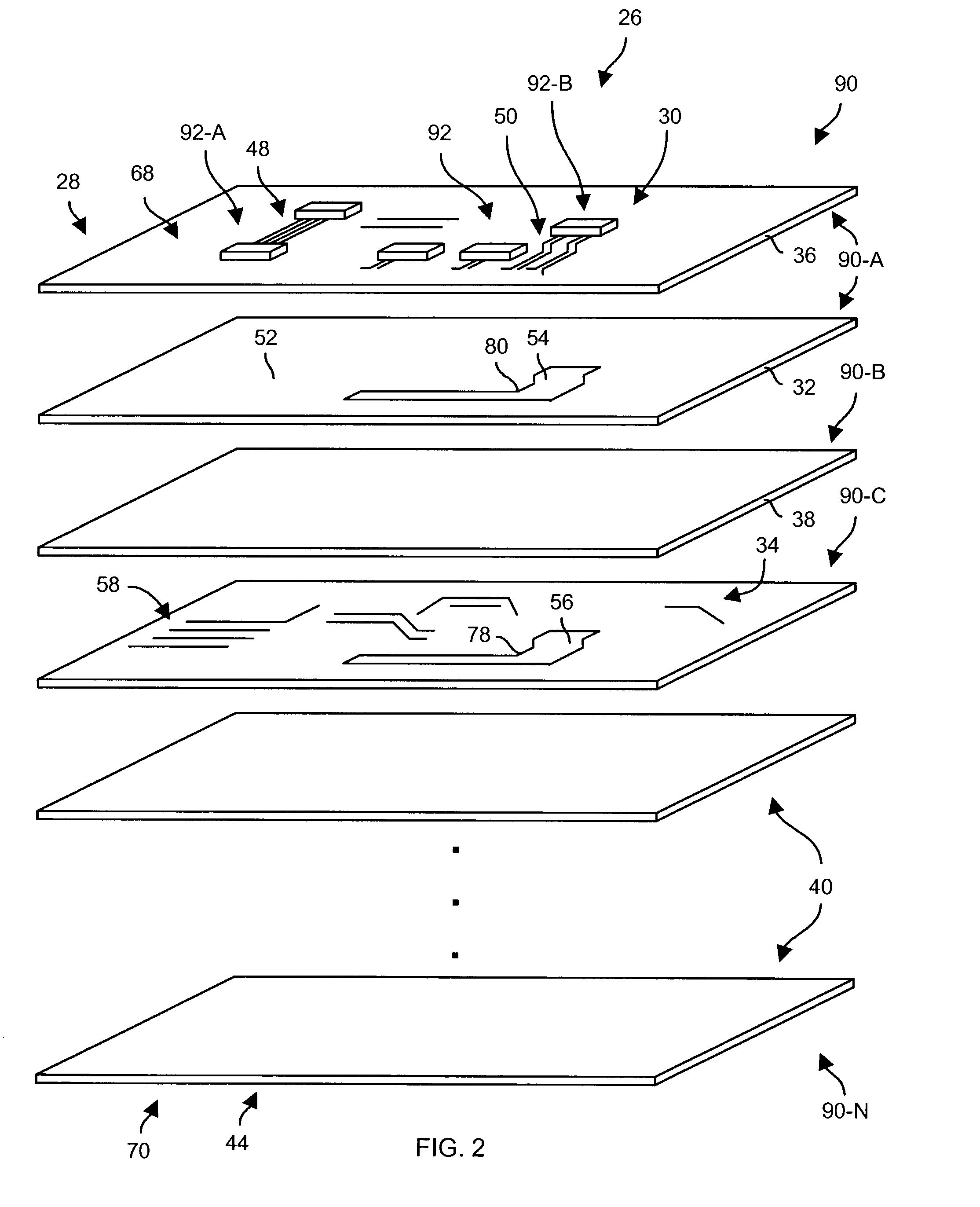Techniques for making a circuit board with improved impedance characteristics
a technology of impedance characteristics and circuit boards, which is applied in the direction of printed circuit aspects, circuit electrical arrangements, high frequency circuit adaptations, etc., can solve the problems of preventing circuit board manufacturers from modifying particular aspects of signal layer traces, and manufacturers may not be able to make differential pair traces of 150 ohms slightly narrower, so as to defeat the purpose of providing differential signal differential traces
- Summary
- Abstract
- Description
- Claims
- Application Information
AI Technical Summary
Problems solved by technology
Method used
Image
Examples
Embodiment Construction
[0022]The invention is directed to techniques for making a circuit board which involve, relative to a set of signal layer traces, placing a non-conductive region within a conductive plane of another signal layer, and a mirroring conductive region in yet another signal layer. Accordingly, any signal layer trace passing over the non-conductive region within the conductive plane can derive its impedance based on its distance from the mirroring conductive region rather than its distance from the conductive plane. As a result, some signal layer traces can have a first impedance based on distance from the conductive plane while other signal layer traces can have a second impedance, which is different than the first impedance, based on distance from the conductive region.
[0023]FIG. 1 shows an electronic system 20 which is suitable for use by the invention. The electronic system 20 includes a power supply 22 having a voltage terminal 23-A and a ground terminal 23-B. The electronic system 20...
PUM
 Login to View More
Login to View More Abstract
Description
Claims
Application Information
 Login to View More
Login to View More - R&D
- Intellectual Property
- Life Sciences
- Materials
- Tech Scout
- Unparalleled Data Quality
- Higher Quality Content
- 60% Fewer Hallucinations
Browse by: Latest US Patents, China's latest patents, Technical Efficacy Thesaurus, Application Domain, Technology Topic, Popular Technical Reports.
© 2025 PatSnap. All rights reserved.Legal|Privacy policy|Modern Slavery Act Transparency Statement|Sitemap|About US| Contact US: help@patsnap.com



